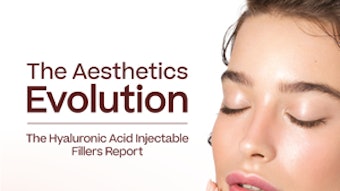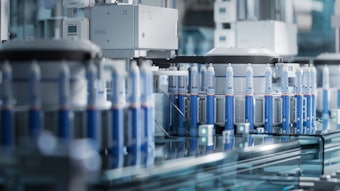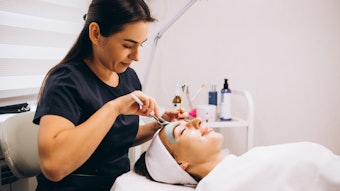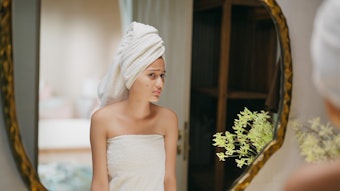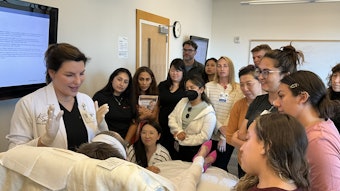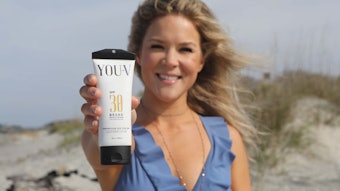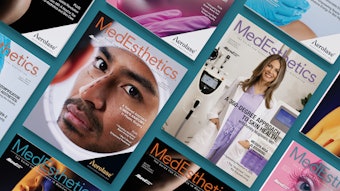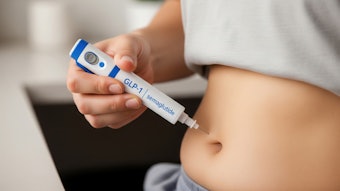
The American Academy of Facial Plastic and Reconstructive Surgery (AAFPRS) reports that 32% of facelift and facial rejuvenation patients are now between the ages of 35–55 [1]. Gen X and Millennials are taking interest in preventative measures against rapid weight loss, wrinkles, discoloration and overall aging. McKinsey’s 2025 Future of Wellness survey concurs. Younger generations, including Gen Z, are expressing more interest in beauty and wellness than ever before compared to previous years, demonstrating a widespread proactive approach to aging that older generations didn’t dabble in as much at these ages.
How Gen Z and Millennials Are Redefining Aging and Wellness
The goals of younger patients and older patients look similar: a fresher look without looking “done,” says Grace Peng, MD FACS, board member for the AAFPRS. However, younger patients undergoing facelifts and facial rejuvenation are acting to slow down the signs of aging before they occur whereas older ones look to correct nature’s course.
McKinsey’s survey found that nearly 30% of Gen Zers and millennials in the United States report prioritizing wellness “a lot more” compared with one year ago, versus up to 23% of older generations [2]. The report concludes younger generations are taking a proactive approach to healthy aging rather than a reactive one, turning to products that promote longevity and relying on cosmetic procedures that intervene ahead of time.
The line between wellness and beauty continues to blur for these age groups, as “better appearance” shifted from the sixth-most-important dimension of health and wellness for US Gen Z consumers in 2023 to the third-most-important dimension in 2024 [2]. The survey found that 46% of consumers and 53% of Gen Z consumers in the U.S. spent more on cosmetic procedures in 2024 than in 2023 [2].
While Gen Zers and millennials make up 36% of the adult population in the United States, they drive more than 41% of annual wellness spend, while consumers aged 58 and older make up 35% of the population but only 28% of wellness spending, per the report.
From Fillers to Sculptra: The Shift Toward Routine Low-Dose, Preventive Aesthetics Among Younger Consumers
While surgical intervention remains in demand, minimally invasive treatments now account for 80% of the procedures these generations seek for facial rejuvenation as they express less interest in invasive surgical procedures [1]. Common concerns for individuals who routinely use these mechanisms express concerns with acne scars, skin discoloration as well as fine lines and wrinkles.
Neurotoxins like Botox and dermal fillers remain the go-to treatments for facial rejuvenation among younger patients, with 90% of AAFPRS surgeons performing these procedures regularly [1]. Baby Botox is by far the most increased treatment that younger patients are requesting, as patients are now very well educated when it comes to risks of procedures, and are straying away from invasive procedures that may carry more risk, says Linda Lee, MD, FACS, also a board member of the AAFPRS. Neurotoxins like Botox and also dermal fillers remain the go-to treatments for facial rejuvenation among younger patients, with 90% of AAFPRS surgeons performing these procedures regularly.Courtesy of Prostock-studio at Adobe Stock
Neurotoxins like Botox and also dermal fillers remain the go-to treatments for facial rejuvenation among younger patients, with 90% of AAFPRS surgeons performing these procedures regularly.Courtesy of Prostock-studio at Adobe Stock
“I'm seeing a lot of younger patients interested in maintenance, protection of skin rather than any dramatic changes,” she adds. “Patients are also more interested in low-dose treatments, and customizing natural treatments such as Baby Botox to prevent frown lines and forehead wrinkles from sticking.”
Peng agrees that neuromodulators such as Botox are very routinely used by patients and even younger patients now as prevention for aging. Relaxing the muscles with neurotoxins prevents wrinkles and deeper set lines later, especially in the glabellar region, the forehead, and the periorbital region, where the crows feet manifest, she explains.
The other non-surgical treatment more young people are requesting is Sculptra, which is a biostimulator, Lee says. While people are still interested in small amounts of temporary filler, many are now shifting priorities to slowing down collagen loss and stimulating natural collagen to avoid the look of over-filler and intervene at the root of aging.
“I do still caution patients that even maintenance treatments such as Botox and Sculptra always carry some risk, and they are not right for everyone,” she adds. “There is a ‘too young’ to start even maintenance procedures, so a consultation with a board certified provider is so important.”
Surgery Still Plays a Role in Achieving Dramatic Rejuvenation
Lee believes that while regenerative therapies can slow down the process, and for some patients it may help them achieve a desired result to no longer need or consider surgery, regenerative therapies will not fully replace the more dramatic results that can be achieved with surgical interventions, like a facelift that these generations also rely on, typically after undergoing rapid weight loss.
Another surgical intervention young patients have been commonly seeking for rejuvenation in the face is fat grafting, Peng says. The procedure involves harvesting fat from the abdomen, inner thighs or flanks and then injecting into areas of the face that may be lacking volume.
Biocompatible Beauty: How PRP and Exosomes Are Elevating Natural Rejuvenation
Lee and Peng report regenerative medicine like PRP and exosomes have begun reshaping minimally invasive outcomes as younger generations learn about biocompatible aesthetics for anti-aging. Many will combine microneedling with PRP at the same time as neuromodulators such as Botox, Peng says.
Most microneedling patients wish to improve not only skin texture, but also skin discoloration such as sunspots, old acne scars and hyperpigmentation. Peng provides a regimen of alternating peels with microneedling with PRP so that after a few months and a series of treatments, there is noticible improvement in their skin.
Lee says while patients often combine Botox treatment with microneedling and PRP, these cannot be done on the same day, but they are often done sequentially as they work differently and for different areas of the face. Patients do, however, combine Baby Botox and baby filler on the same day.
Platelet rich plasma and exosomes, because of its growth factors within it, have enhanced results of microneedling but also fat cell survival after fat grafting procedures, she explains, making it an additional rejuvenative boost for these kinds of facial treatments.
More Men Are Turning to Cosmetic Treatments and GLP-1s for Confidence
While men have become more keen to undergo cosmetic treatments for facial rejuvenation more than in previous years due to digital age obligations like Zoom meetings, men are also partaking in GLP-1 for weight loss. Losing a significant amount of weight and having hanging or loose skin in the neck, necklifts as well as non-invasive facial rejuvenation have pulled them into the 32%, Lee says.
“For many males, filler and volume restoration is often about subtly restoring hollowness in the cheeks to appear less tired, in addition to appearing more youthful,” she adds.
More than a third of Gen Z and millennial consumers in the United States and the United Kingdom find it very difficult to manage their weight [2]. While exercise remains the most common weight management intervention across markets, GLP-1s have risen in popularity for patients who are focused on meeting their nutritional and health needs while reducing caloric intake [2].
With a clear preference for minimally invasive treatments, younger generations are prioritizing maintenance and long-term skin health over dramatic transformation. Their openess to technology and personalization is reflected in an increased wellness spending and early adoption of cosmetic procedures. This points to a cultural shift focused on aging graciously online and offline.
References:
1-https://www.aafprs.org/Media/Press_Releases/2024_Annual_Trends_Survey.aspx
2- https://www.mckinsey.com/industries/consumer-packaged-goods/our-insights/future-of-wellness-trends

